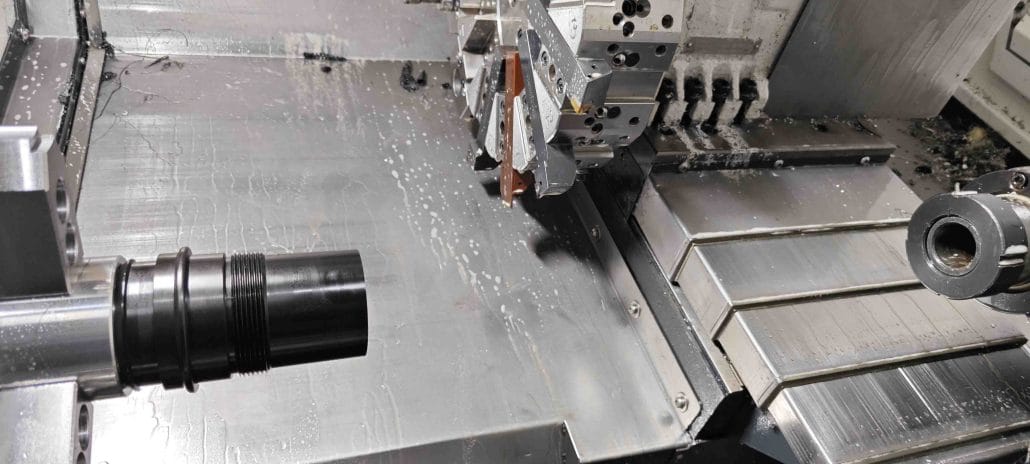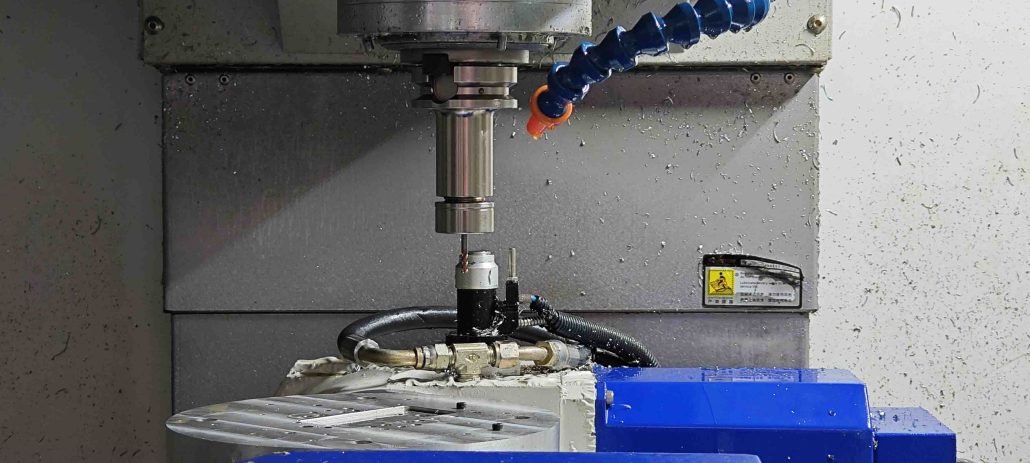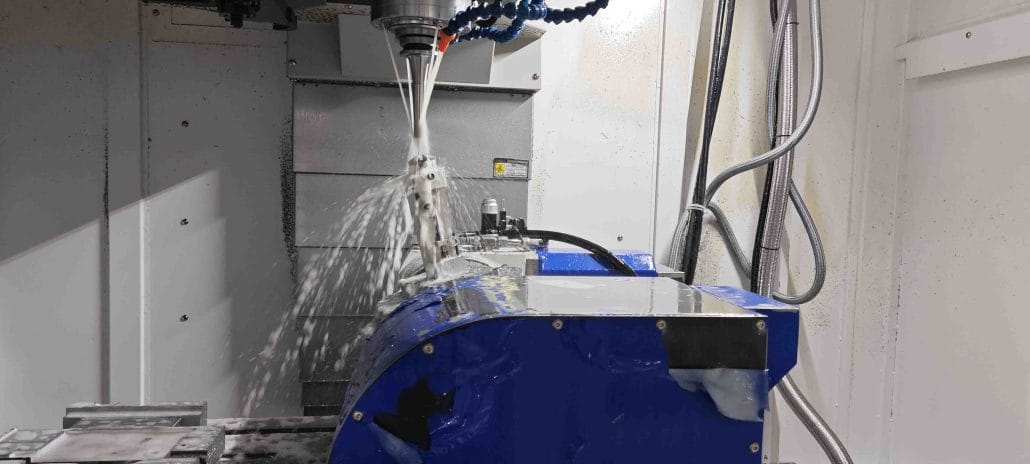CNC machining is a popular manufacturing process that involves using computer-controlled machines to produce parts from a variety of materials. Unlike traditional machining methods, CNC machining is highly precise and accurate, allowing for the production of complex parts with a high level of consistency and quality.
Designing parts for CNC machining requires a thorough understanding of the process, as well as the materials and machines used. In this article, we will provide a comprehensive guide for professional engineers and designers on how to design parts for CNC machining.

Understanding CNC Machining
To design parts for CNC machining, it’s important to understand the process and how it works. CNC machining involves a computer-controlled machine that reads a set of instructions (known as G-code) and moves a cutting tool along a specific path, removing material from a block of material to produce the desired shape.
There are several different types of CNC machines, including milling machines, lathes, and routers, each of which is suited to different types of parts and materials.
What is CNC Machining?
CNC machining is a subtractive manufacturing process that uses computer-controlled machines to remove material from a workpiece. The process begins with engineers creating a digital design, which is then translated into machine code that instructs the CNC machine on how to cut, drill, or shape the part.
CNC machines come in many forms, including lathes, mills, routers, and grinders, and are capable of working with a wide range of materials, such as metal, plastic, and wood. Depending on the complexity of the part, multiple CNC machines may be used to perform different operations.
Why Choose CNC Machining?
One of the primary benefits of CNC machining is its high level of precision. Because the process is fully automated, the likelihood of mistakes or errors is minimized, leading to higher-quality parts with tighter tolerances.
CNC machining is also highly customizable, allowing engineers to produce parts with intricate geometries and complex shapes that would be difficult or impossible to achieve using traditional manufacturing methods.
CNC machining is also an efficient manufacturing process, with the ability to produce large quantities of parts quickly and consistently. This can lead to lower costs and faster production times for businesses looking to scale their manufacturing operations.
Applications of CNC Machining
CNC machining is used across a wide range of industries, including aerospace, automotive, medical, and electronics. Some common applications include:
- Engine components: CNC machining is commonly used to produce engine parts for cars and airplanes, such as crankshafts, cylinder heads, and valve bodies.
- Medical devices: CNC machining is used to produce surgical instruments, implants, and prosthetics with high levels of accuracy and precision.
- Electronics: CNC machining is used to produce components for consumer electronics, such as smartphones, laptops, and tablets, as well as industrial electronics, such as control systems and sensors.
- Prototyping: CNC machining is often used in product design and development to produce functional prototypes quickly and accurately.
Material selection: choosing the right material for the job
When designing parts for CNC machining, material selection is crucial. Different materials have different properties, such as strength, hardness, and thermal conductivity, which can affect the machining process. Some common materials used in CNC machining include metals (such as aluminum, steel, and titanium), plastics, and composites.
Why Material Selection Matters
The material used in CNC machining has a significant impact on the quality and durability of the final product. There are a variety of factors that must be taken into account when choosing the appropriate material for a given project, including:
- The intended purpose of the product
- The desired aesthetic characteristics of the finished product
- The strength and durability requirements of the product
- The manufacturing process and machining requirements
Choosing the wrong material can lead to a number of issues, including product failure, poor quality finishes, or excessive wear and tear. It is essential to consider the specific requirements of your project when selecting materials to ensure that you get the best possible results.

Factors to Consider in Material Selection
When choosing materials for CNC machining, there are several key factors that you should consider:
Material Properties: The performance of your finished product will depend largely on the physical and mechanical properties of the material you select. This includes things like strength, hardness, toughness, and ductility, as well as thermal and electrical conductivity.
Machinability: Different materials have different machinability characteristics, which can have a significant impact on the efficiency and effectiveness of your manufacturing process. It is important to choose materials that are easy to machine and produce minimal waste.
Cost: The cost of the material must also be taken into account when selecting materials for your project. Higher-quality materials may come at a higher price, so it is important to balance quality and cost considerations when making your selection.
Environmental Factors: Environmental factors such as temperature, humidity, and exposure to corrosive substances can also impact material performance. It is important to choose materials that are appropriate for the intended environment or to implement protective coatings or treatments where necessary.
Common CNC Machining Materials
There are a wide range of materials that are commonly used in CNC machining projects, each with its own unique properties, strengths, and weaknesses. Here are some of the most popular materials used in CNC machining:
Aluminum: Aluminum is a lightweight, corrosion-resistant material that is easy to machine. It is ideal for use in applications that require a high degree of precision or a good strength-to-weight ratio.
Steel: Steel is a strong and durable material that is suitable for a wide range of applications. It can be machined to a high degree of precision and is often used in products that require a high degree of strength and toughness.
Titanium: Titanium is a lightweight and extremely strong material that is ideal for use in a variety of applications. It is highly resistant to corrosion and can be machined to a high degree of precision.
Plastics: Plastics are lightweight materials that are easy to machine and can be fabricated in a wide range of shapes and sizes. They are ideal for use in applications that require good chemical resistance or a high degree of flexibility.
When selecting a material, it’s important to consider factors such as the application, the required strength and durability, and the machinability of the material.

Considerations when designing parts for CNC machining
Designing parts for CNC machining requires a different approach than traditional machining methods. CNC machines are highly precise and can produce complex shapes, but they also have certain limitations that must be considered when designing parts.
Machining Tolerance
CNC machines can achieve high levels of accuracy and precision, but they are limited by machining tolerances. Tolerance is the acceptable range of deviation from the desired measurement, which is usually expressed in thousandths of an inch. When designing parts for CNC machining, you must consider the required tolerances to ensure your components meet the dimensional specifications.
Material Selection
CNC machines can process various materials, including metals, plastics, composites, and wood. Your material choice will depend on the application and required characteristics, such as strength, thermal conductivity, and chemical resistance. When selecting materials, consider their machinability and surface finish requirements.
Design for Machinability
Designs that are optimized for machining can improve productivity and reduce costs. Machinability refers to the ease with which a material can be machined. When designing for CNC machining, consider the following:
Avoid internal radii that are smaller than the cutting tool radius
Minimize sharp corners that can be difficult to machine
Avoid overhangs that can cause the cutting tool to break or deflect
Design for Efficient Production
CNC machining can provide significant benefits in terms of production efficiency and quality. However, designing for CNC machining requires a different approach than traditional manufacturing methods. The following design considerations can help you to optimize your designs for efficient production:
Minimize the number of setup changes to reduce machine downtime
Design parts that can be nested to maximize material utilization
Design parts with similar operations to maximize machine efficiency
Reduce the number of tool changes to increase production speed
Designing for CNC machining requires a thorough understanding of the process and a unique set of considerations. By understanding machining tolerances, material selection, machinability, and efficient production, designers can create effective and optimized designs for CNC machining. Implementing these considerations can result in improved productivity, quality, and reduced costs. Keep these factors in mind when designing your next project to achieve optimal results.
Select the Correct CNC Machining Parts Design Software
CNC machining is an increasingly popular way to produce a wide range of products, from automobile parts to aerospace components. However, the success of any CNC machining project depends heavily on the design software used. Selecting the correct cnc parts online design software is essential to ensure your project runs as smoothly as possible.
CAD/CAM software is an essential tool for designing parts for CNC machining. CAD (Computer-Aided Design) software is used to create a 3D model of the part, while CAM (Computer-Aided Manufacturing) software is used to generate the G-code that controls the CNC machine.
There are several different CAD/CAM software packages available, each with its own features and capabilities. When selecting a software package, it’s important to consider factors such as the complexity of the part, the required accuracy, and the user-friendliness of the software.

Why is CNC Machining Parts Design Software Important?
CNC machining software is used to create designs that are used in the CNC machining process. The software generates the instructions that are sent to the CNC machine, which then creates the desired product. The wrong software can lead to errors in the design, machining faults, or even equipment damage. Poorly designed products can also cause safety risks, leading to machinery failure, accidents, and injuries.
Factors to Consider when Selecting CNC Machining Parts Design Software
There are several key factors you should take into account when deciding on CNC machining software. Here are some essential ones:
Functionality
Before selecting a software package, identify what functions are essential to your project. Some software may have more features than you require, while others may lack some important tools. Consider what types of designs you need to create, the level of accuracy you require, and the types of materials you’ll be working with.
User Interface
The user interface should be intuitive and user-friendly. An overly complex interface can lead to errors and delays in the design process, which can ultimately affect production. Check whether the software provides features such as 3D visualization and real-time simulation, which can make the design process more accessible.
Integration
Make sure that the software integrates with your existing systems. For instance, if you already use a computer-aided design (CAD) program, select software that seamlessly integrates with it. This saves time and ensures that all systems work together for a seamless design and machining process.
Cost
Many CNC machining parts design software packages vary in price, depending on complexity and features. Weigh up the costs against your budget and the complexity of your requirements.
Customer Reviews
Look for software with positive customer reviews. Customer feedback can provide valuable insights about the software’s capabilities, reliability, and ease of use.
Top CNC Machining Parts Design Software Options
Based on the parameters above, we’ve put together our top picks for CNC machining parts design software.
Autodesk Inventor
Autodesk Inventor is a popular choice for creating 3D models, creating simulations, and generating machine code for 5-axis milling, turning, and wire EDM CNC machining systems. The software can work well for both small and large companies, offering customizable toolsets that cater to different manufacturing requirements. However, the learning curve can be steep, requiring many hours of training before use.
Fusion 360
Fusion 360 is an all-in-one design and manufacturing software that covers CAD, CAM, and CAE. It’s cloud-based, which means you can work on your project from anywhere. It includes a CAM workspace and features tool paths that are specific to CNC machining operations. The software is user-friendly, and there are several online resources available for those who are new to Fusion 360.
SolidWorks
SolidWorks is another popular software option, specifically geared towards creating intricate designs, including those for CNC machining operations. The software offers a range of modeling capabilities, including solid modeling, surface modeling, and direct editing to create more complex designs. SolidWorks also has an extensive library of materials and hardware components to work with.
Selecting the correct CNC machining parts design software is essential to ensure a smooth and efficient design and machining process. There are several factors to consider, including functionality, user interface, integration, cost, and customer reviews. Autodesk Inventor, Fusion 360, and SolidWorks are among the top options available and offer a wide range of tools and resources to enable users to create designs that meet their requirements. Ultimately, choose a software package that aligns with your needs and can grow with your business.
CNC Machining Quality Control
Quality control is an essential part of the CNC machining process. CNC machines produce consistent and precise parts, but there are still factors that can affect the final product, such as tool wear and material variations.
To ensure quality control, it’s important to monitor the machining process, inspect the parts during and after machining, and perform post-machining treatments (such as polishing or surface finishing) as necessary.
Why Quality Control is Crucial in CNC Machining
The primary objective of quality control in CNC machining is to ensure that the final product meets the customers’ requirements. The process involves inspecting the raw materials, intermediate products, and finished products through various techniques. Quality control plays a crucial role in CNC machining because it helps to identify errors early in the process, which can save production time, reduce costs, and avoid potential customer dissatisfaction.
Methods and Tools for Quality Control in CNC Machining:
Statistical Process Control (SPC):
SPC is a method that involves monitoring the CNC machining process to detect any changes or deviations that occur during production. The technique involves taking measurements at selected intervals and analyzing the data using statistical tools such as Control charts, Histograms, and Pareto charts. SPC helps to identify any variations that may affect the product’s quality, allowing for early intervention before the product is complete.
Coordinate Measuring Machines (CMM):
CMM is a tool that helps to measure the dimensions and geometric features of the final product accurately. CMM measures various shapes and sizes of the workpiece, which is then compared with the design specifications of the product. CMM provides detailed feedback on the final product, anything from variations in shape to surface finishing.
Computer-Aided Design (CAD) and Computer-Aided Manufacturing (CAM):
CAD is a software that enables designers to create detailed three-dimensional models of the product. The CAM software translates the design into machine instructions to control the CNC machine and produce the final product. These two technologies are essential for quality control in CNC machining because they ensure that the product design is precise, accurate and the machine is programmed correctly based on the design.
Quality control is an integral part of CNC machining. It helps to identify errors early in the process, save time and reduce costs, and ultimately satisfy customers’ requirements. Various methods and tools can be used to ensure quality control, including SPC, CMM, CAD, and CAM. By adopting these methods and tools, CNC machining shops can achieve the highest quality and most efficient production process, ultimately benefitting their customers.
Testing, evaluating, and refining the design
Once you’ve designed a part, you need to test it to determine if it meets your requirements. Testing the part for fit, form, and function will enable you to identify any flaws or deficiencies in the design. If necessary, you can then refine the design to ensure that it works correctly.
Designing parts for CNC machining requires a thorough understanding of the process, as well as the materials and machines used. By considering factors such as material selection, design considerations, CAD/CAM software, and quality control, professional engineers and designers can create high-quality parts that meet the specific needs of their applications.
With the right tools and knowledge, CNC machining can be a highly efficient and cost-effective manufacturing process that produces consistent and high-quality parts.


